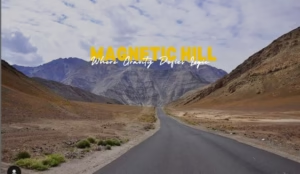Welcome to Wander Sky! 😊 We are happy to help you explore one of the most beautiful and peaceful places in Uttarakhand—Tungnath Temple. This temple is the highest Shiva temple in the world and is surrounded by tall mountains, green forests, and fresh air. It’s a great spot for people who love nature, trekking, or want to feel close to something spiritual. The trek from Chopta to Tungnath is short and not too hard, so even beginners can enjoy it. In this blog, we’ll share easy travel tips like the best time to visit, what to pack, and how to get there. And if you want to visit nearby places like Chandrashila Peak or Deoriatal Lake, WanderSky also offers simple travel packages to make your trip smooth and full of joy.
Location of Tungnath Temple
Tungnath Travel Tips Embarking from Delhi, your first milestone is Haridwar. Tungnath lies 200 kilometers away from this starting point. Along the way to Tungnath, you’ll find three specific stopovers – Sari, Chopta, and Deoria Tal.
Tungnath Travel Tips
For those preferring air travel, the nearest airport is Jolly Grant Airport in Dehradun, situated at a distance of 180 kilometers from Chopta. The closest railway connection is in Haridwar, from where you can access a cab or bus service to Sari village. Sari serves as the common base for the Tungnath trek.
When it comes to traveling from Delhi to Haridwar, you have a range of options, from regular Janpath buses to more luxurious Volvo coaches. If you encounter difficulties finding buses directly to Sari, you can consider an alternative route starting from Kund. Keep in mind that direct buses to the trekking sites are scarce, and you may need to navigate using GMOU buses or personal transportation. Chopta, a prominent camping site on the trek, is approximately 40 kilometers from Kund and 54 kilometers from Sari.
The Himalayas, adorned with its lush flora and fauna, offer a visual feast. in Tungnath Travel Tips As an avid trekker, I’ve explored various terrains, yet the Tungnath trek stands out due to its passage through a wildlife sanctuary. The journey encompasses enchanting Rhododendron forests that cast a crimson hue on the rustic landscapes, leading to pristine white snow that delicately yields underfoot. This experience remains etched in memory, offering an easy yet rewarding ascent, making it an ideal trek for families and friends.
Why Tungnath?
Once again, the Himalayas reveal their opulent flora and fauna, an enchanting visual treat. Although I have embarked on various treks, the Tungnath experience stands as one of the longest, particularly due to its passage through a wildlife sanctuary.
The trail’s journey through Rhododendron forests, casting a crimson glow over the rustic terrain, contrasts starkly with the delicate, pure white snow that graces the landscape. This encounter remains deeply ingrained, offering not only an accessible climb but also an ideal trekking destination for families and friends.
Trekking Itinerary
Day 1 – Your expedition kicks off with a drive to the base point, Sari, requiring less than half a day. Comfortable lodging awaits to accommodate your overnight stay.
Day 2 – Begin your trek to Deoria Tal, a brief 40-minute stroll away. Deoria Tal serves as a favored camping site, attracting both adventure enthusiasts and those seeking a serene Uttarakhand retreat. Time seemed to slip away as I lingered by the lake, captivated by the Chaukhamba mountains’ serene reflection.
Day 3 – Progressing from Deoria Tal to Chopta entails a lengthier journey due to escalating steepness and altitude. Navigating the uneven pine forest terrains, this segment requires approximately 8 to 10 hours. As the third day drew to a close, my eagerness to witness the snow-capped peak heightened my restlessness. I counted down the hours, yearning for daybreak to shoulder my rucksack and embark on the trek to this captivating spectacle.
Day 4 – The fourth day presents a 5-hour trek marked by a moderately manageable ascent. Although this duration suits experienced trekkers, it may vary for novices. Situated at a remarkable elevation of 12,000 feet, this point holds great significance within Uttarakhand’s trekking realm, a vital checkpoint for comprehensive exploration.
Why Choose Tungnath?
Once more, the Himalayas unveil their opulent flora and fauna, captivating the senses. Among my numerous trekking escapades, the Tungnath expedition stands out as one of the most extensive, offering a unique passage through a wildlife sanctuary.
The trail winds through Rhododendron forests, casting a vibrant crimson hue upon the rustic landscape. This dramatic contrast merges with the delicate, pristine white snow underfoot, creating an unforgettable experience. Notably accessible, the climb appeals to both seasoned trekkers and novices, rendering it a perfect destination for familial and friendly expeditions.
Why Tungnath Stands Out?
Revered as the highest Shiva temple globally, Tungnath draws a diverse crowd, ranging from tourists to locals. This humble sanctuary of worship serves as an exceptional meditation spot. The atmosphere exudes an energy unlike any other, with the chilling breeze offering a sense of serenity despite its occasional intensity. Seated on the rocks amidst the silence of the snowy mountains, one can truly experience a refreshing connection.
Another striking aspect that sets this peak apart is the panoramic view from its summit. Unlike the typical distant view of valleys, the Tungnath vantage point offers an intimate perspective on the major Western and Eastern Uttarakhand mountain peaks, seemingly within arm’s reach.
Best Time to Embark
Each season unfurls a distinct facet of Tungnath, leaving the timing of your ascent largely to personal preference. For a comfortable trekking experience, I highly recommend visiting during the summer months when temperatures reach a pleasant 16 degrees Celsius – not too cold, not too warm.
May holds a special significance as the main deity, Lord Tungnath, is ceremoniously brought from Mukumath to the temple, honoring an age-old tradition. This period enhances the appeal of Tungnath, with the temple becoming a focal point. Moreover, May facilitates a relatively smoother trek to Chandrashila.
For those who relish adventure, monsoons offer a challenge. During one such rainy trek, our guide shared how braving a downpour can be perilous yet deeply rewarding. Winter trekking, on the other hand, offers a surreal experience, with fresh snow forming a pristine path to the summit.
However, the winter season may present challenges in securing suitable accommodations. As tourists flock to witness the snow-covered Chandrashila spectacle, most lodgings become fully occupied. Thus, an early reservation is your key to a comfortable stay.
Unmissable Around Tungnath
Part of the esteemed Kedarnath Wildlife Sanctuary, the Tunganath trek is a paradise for nature enthusiasts. The region hosts a plethora of high-altitude Himalayan avian species, a sight to behold for any bird-watcher. Spotting these elusive species, including the Koklass pheasants, Himalayan monal, and nesting pied thrush, presents a thrilling challenge.
The temple itself, nestled atop Chandranath Parvat’s ridges, holds a unique charm. Positioned between the glistening streams of Alaknanda and Mandakini, it occupies a sacred space at an elevation exceeding 12,073 feet. Tungnath constitutes the third in the series of Panch Kedar – Kedarnath, Rudranath, Tungnath, Madhyamaheshwar, and Kalpeshwar. With over a millennium of history, the temple carries profound mythological and historical significance.
Tungnath’s Mythical Legacy
A legendary tale intertwines with the formation of the Tungnath temple, linking back to the Pandavas and Kauravas. Following the Kurukshetra war, laden with guilt for fratricide, the Pandavas sought redemption. Lord Shiva, disheartened by the war, took refuge in the Garhwali region, assuming the form of a bull.
The Pandavas embarked on an arduous search, ultimately unraveling the bull’s disguise at five distinct locations. This narrative birthed the formation of five Shiva temples across the snow-clad mountains. Among these, Tungnath emerged from the arms of the bull’s guise. This story assumes various renditions, akin to verses of an endless poem.
Distinct in its simplicity, Tungnath temple exudes grandeur. Apart from the month when Lord Shiva graces the temple, adornments and festivities remain minimal. Embracing a minimalist Garhwali architectural style, the temple houses shrines devoted to Lord Shiva, Goddess Parvati, Nandi, and other deities. From this point, the Chandrashila peak lies a mere 500 feet above, beckoning with its allure.
Essential Reminders
- Due to limited halting points en route, ensure you pack all necessary essentials.
- Nighttime trekking should be avoided, despite the route’s safety, to prevent potential wrong turns within the forests.
- Carry ample water to stay hydrated during your ascent.
- Opt for lightweight snacks such as biscuits, nuts, energy bars, or glucose to combat altitude-induced discomfort.
- Invest in proper trekking gear to ensure a safe and enjoyable experience.
- Dress in warm yet lightweight clothing, and keep a raincoat handy for unexpected showers.
- Waterproof footwear proves invaluable when navigating snow-covered terrains.
- Solo trekkers should carry a personal first aid kit, while group expeditions often include essentials provided by trekking guides.
- Limited ATMs and charging points are available after Chopta, necessitating sufficient cash and a power bank.
- Photography is permitted around Tungnath but not within the temple premises.
Conclusion
Embarking on the Tungnath trek is an immersive journey through the awe-inspiring Himalayan landscapes. The route encapsulates diverse terrains, breathtaking vistas, and an extraordinary blend of spirituality and nature. From the serenity of Deoria Tal to the rugged ascent towards Chopta and the ultimate summit at Tungnath, each step offers an unforgettable experience.
FAQs About Tungnath Temple
1. What is Tungnath Temple and where is it located?
Tungnath Temple is the highest Shiva temple in the world, situated at an altitude of 3,680 meters in the Garhwal Himalayas near Chopta, Uttarakhand. It is one of the five Panch Kedar temples and holds deep mythological significance.
2. Why is Tungnath Temple important in Hindu mythology?
It is believed that Lord Shiva’s arms appeared here when he disguised himself as a bull to evade the Pandavas. Tungnath is part of the sacred Panch Kedar pilgrimage circuit.
3. How do I reach Tungnath Temple?
The trek to Tungnath begins from Chopta, which is accessible by road. The nearest railway station is Rishikesh (around 209 km), and the closest airport is Jolly Grant Airport in Dehradun (approximately 226 km). From Chopta, it’s a 3.5–4 km trek to the temple.
4. Is the Tungnath trek suitable for beginners?
Yes, the trek is moderate and suitable for beginners with basic fitness. The trail offers scenic views of meadows, forests, and Himalayan peaks like Nanda Devi and Trishul.
5. What challenges should I expect during the trek?
Expect altitude gain, uneven terrain, and unpredictable weather. Monsoon season brings slippery paths and landslides, while winter snowfall may block access to the temple.
6. What is the best time to visit Tungnath Temple?
The ideal time to visit is between May and November. The temple closes during winter due to heavy snowfall.
7. Are there any facilities available at Tungnath or Chopta?
Basic facilities like guesthouses and tea stalls are available in Chopta. Near the temple, amenities are limited, so it’s advisable to carry essentials like water, snacks, and warm clothing.
8. What should I pack for the trek?
Carry sturdy trekking shoes, layered clothing, rain gear, water bottles, snacks, and a small first-aid kit. Acclimatization is recommended before starting the trek.
9. What other places can I visit near Tungnath Temple?
You can visit Chandrashila Peak, just 1.5 km ahead of Tungnath, known for its breathtaking panoramic views. Deoriatal Lake, located around 14 km from Chopta, is another serene spot ideal for camping and birdwatching.
10. Can I combine Tungnath with other treks or packages?
Absolutely. Many travel companies offer combo packages that include Chandrashila Summit, Deoriatal Lake, and even extended treks in the Kedarnath region.





